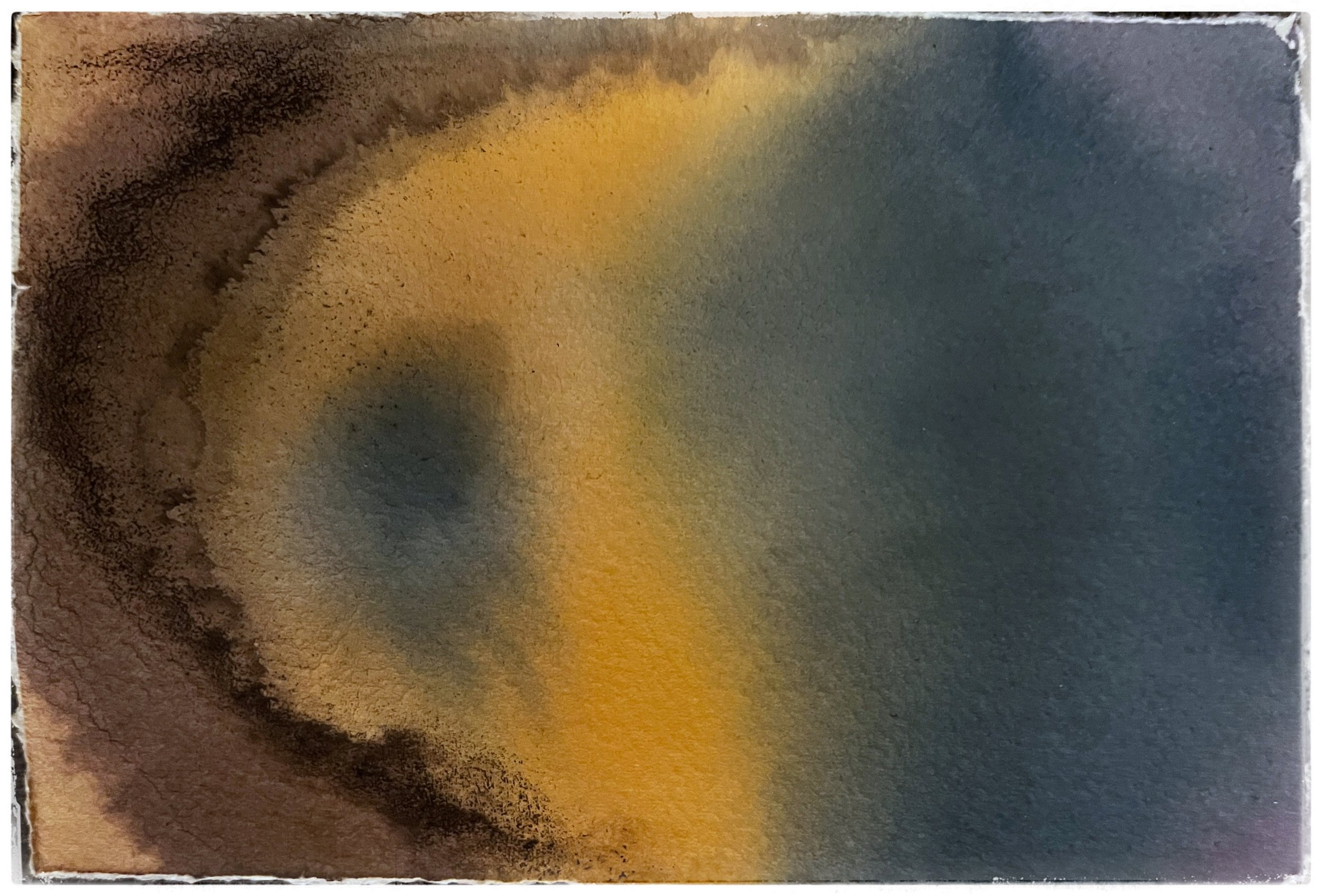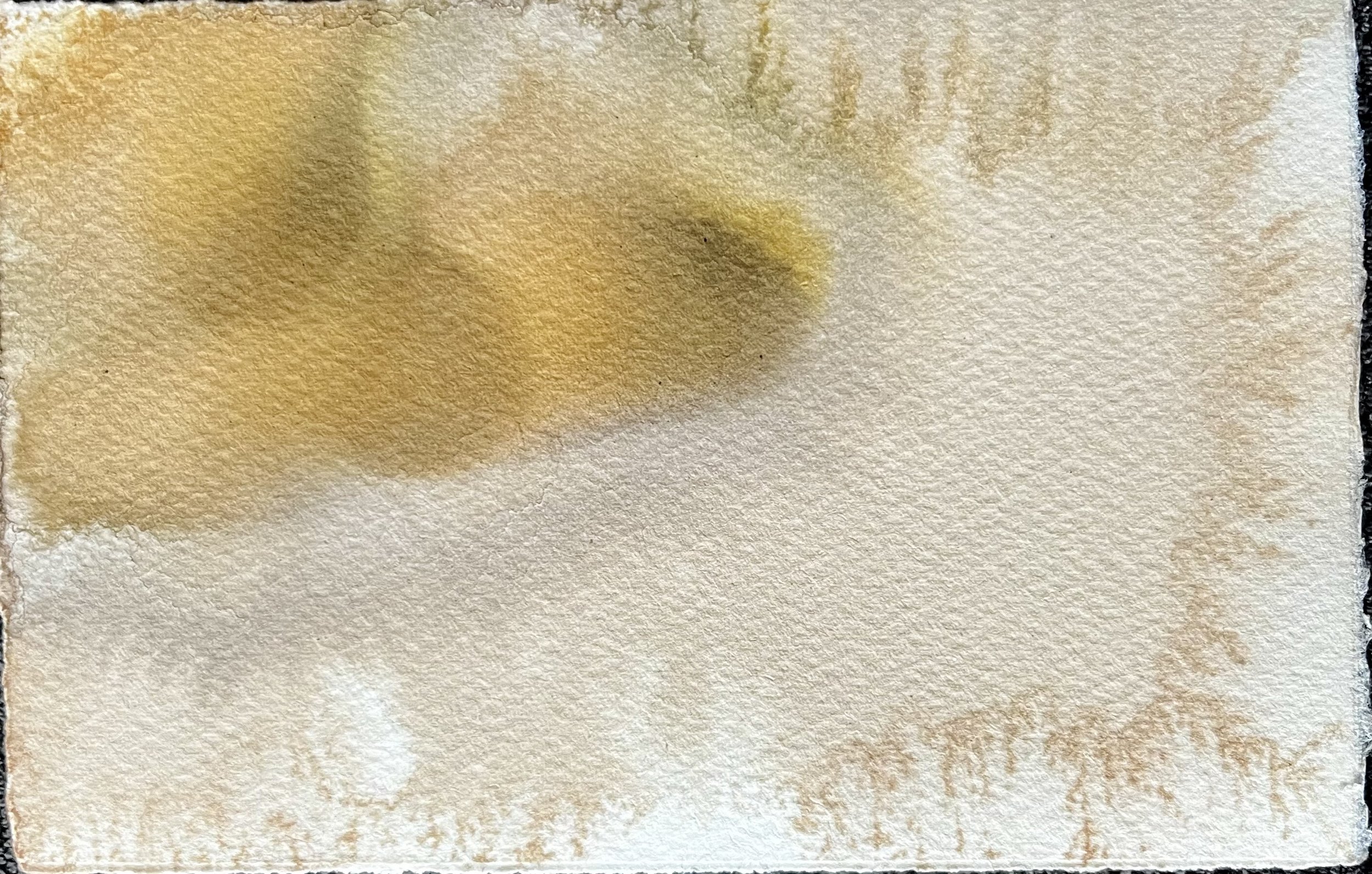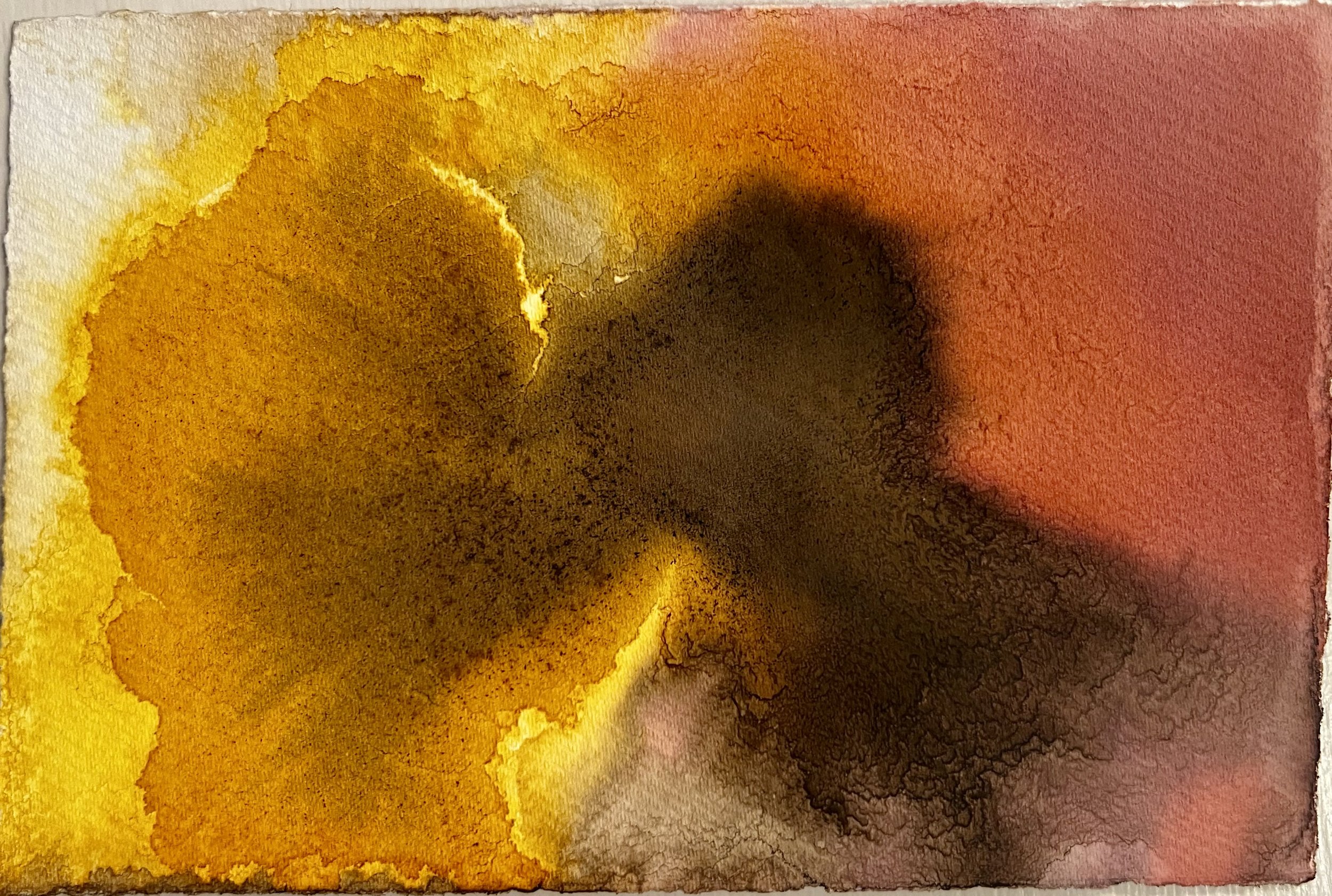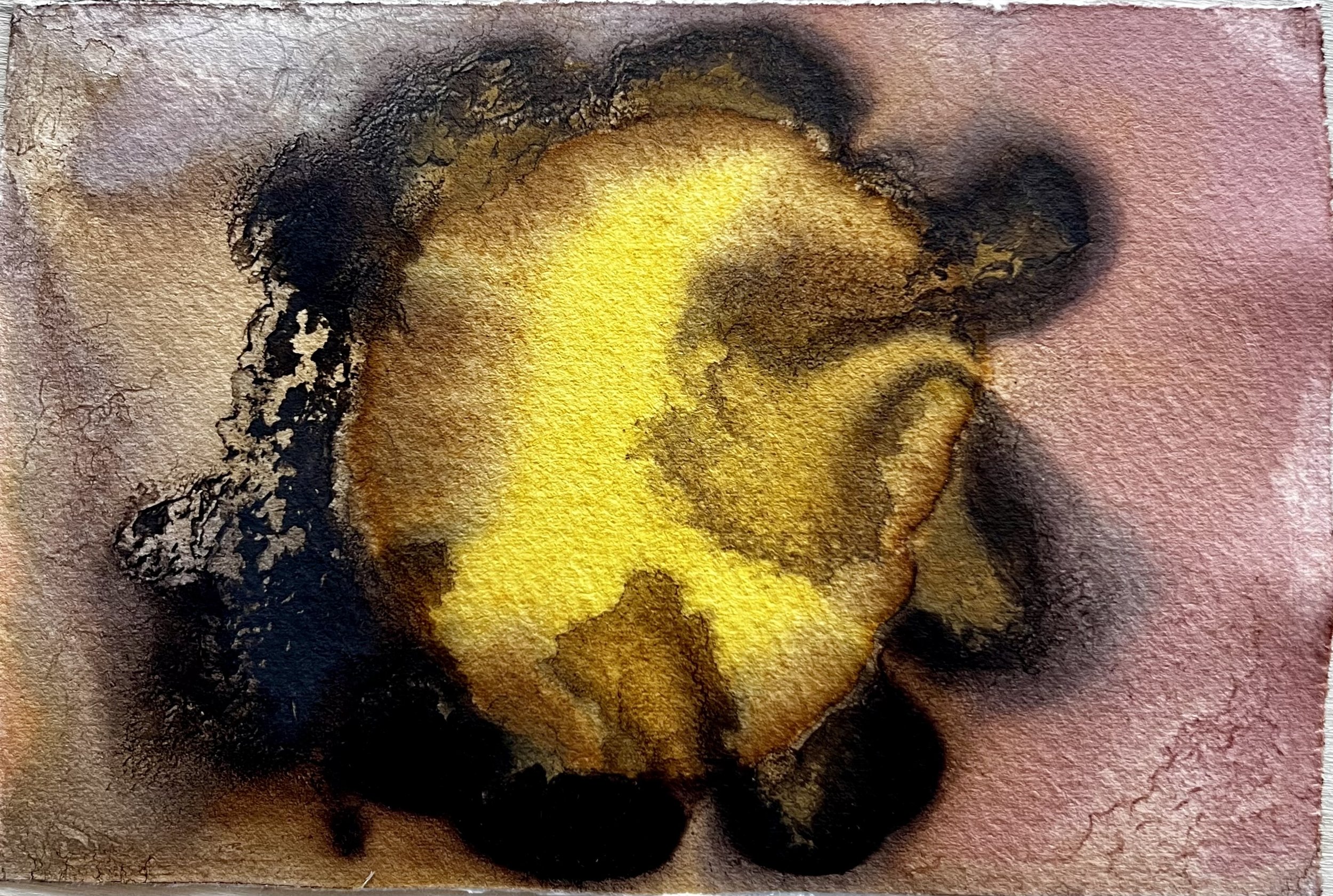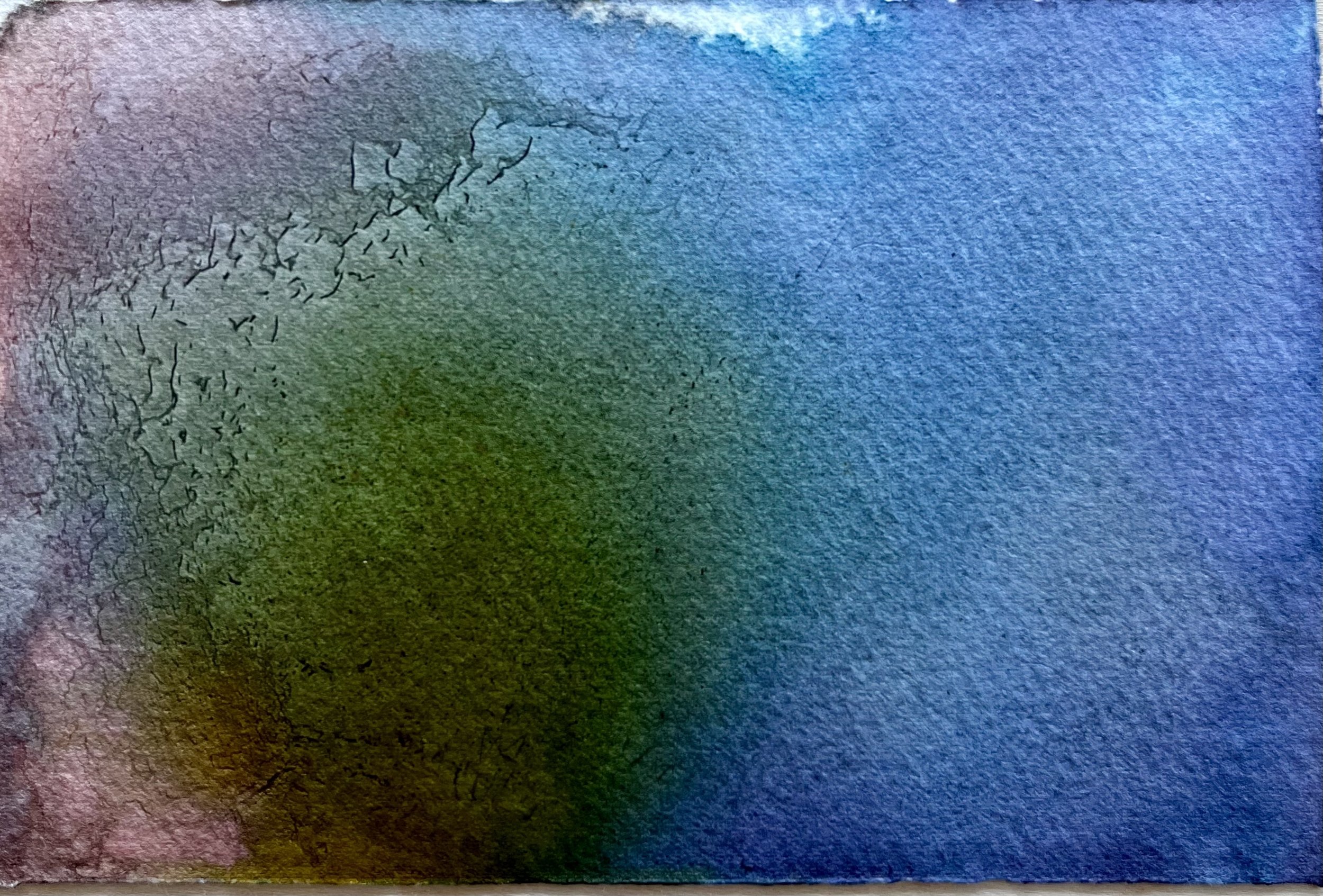
20 Days Foraged Ink Pigments
Jan/Feb 2024: abstract painting on archival watercolour paper (4” x 6”)
While walking through the rainforest in the Pacific Northwest one damp Autumn day a brightly covered mushroom, at the base of a large Fir tree, caught my eye. I was struck by its form, velvety texture and bright yellow and orange colours. I knew that the Dyers Polypore (Phaeolus schweinitzii) made beautiful dyes for textiles but began to wonder if anyone had experience making ink with it.
That was over a year ago. I couldn’t find a lot of information about making ink from mushrooms so I decided to experiment. I respectfully harvested a small amount of the mushroom from near my cabin and boiled it in water for a few hours and then strained it through a coffee filter, added a drop of clove oil and poured it into a glass jar.
When I saw the how generous this mushroom was with colour I decided to experiment with making other plant and mineral pigments. This study is a daily ritual practice to come to know these materials I have harvested, been gifted and made into ink from food scraps. I have become immensely curious about how colour can be hidden inside the animate world of plants, fungi, rocks, and minerals that inhabit the environment we walk through…oftentimes habitually.
J.21 Red Cabbage ~ Dyers Polypore ~ Rust
J. 22 Dyers Polypore ~ Rust
J. 23 Turmeric ~ Rust ~ Red Cabbage
J. 24 Lobaria Pulmonaria ~ Red Cabbage ~ Dyers Polypore ~ Rust
J. 25 Lobaria Pulmonaria ~ Red Cabbage
J. 26 Lobaria Pulmonaria ~ Black Walnut ~ Turmeric ~ Rust
J. 27 Lobaria Pulmonaria ~ Dyers Polypore ~ Rust
J. 28 ~ Dyers Polypore ~ Rust ~ Red Cabbage
J. 29 ~ Cortinarius ~ Dyers Polypore ~ Rust ~ Red Cabbage
J. 30 "Embryonic" ~ Cortinarius ~ Dyers Polypore ~ Rust
J. 31 "Incubating" ~ Cortinarius ~ Turmeric ~ Red Cabbage ~ Rust
F.1 "Imbolc: Emerging from the Depths" ~ Cortinarius ~ Dyers Polypore ~ Red Cabbage
F. 2 Turmeric ~ Cortinarius ~ Black Walnut ~ Rust
F. 3 Cortinarius ~ Rust ~ Dyers Polypore ~ Black Walnut ~ Salt
F. 4 Red Cabbage ~ Dyers Polypore ~ Cortinarius ~ Lobaria Pulmonaria
F. 5 Cortinarius ~ Dyers Polypore ~ Red Cabbage ~ Baking Soda ~ Lemon Juice
F. 6 Lobaria Pulmonaria ~ Red Cabbage ~ Rust ~ Lemon Juice
F. 7 Cortinarius ~ Red Cabbage ~ Lemon Juice ~ Baking Soda
F. 8 Turmeric ~ Cortinarius ~ Red Cabbage ~ Lemon Juice
F. 9 Turmeric ~ Red Cabbage ~ Rust ~ Lemon Juice
Notes on study:
mushrooms to try:
Hapalopilus nidulans (also known as Tender Nesting Polypore or Cinnamon Bracket): a poisonous polypore that makes a beautiful lilac coloured dye (try bringing out colour with ammonium (light violet to purplish reaction to KOH)). More commonly found in Eastern and SW North America.
Hypomyces lactifluorum (also known as Lobster mushroom)
